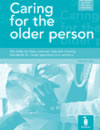 by Malcolm Day, (Pavilion), 2006, 110pp, pbk, £19.95, ISBN1 84196 198 1
by Malcolm Day, (Pavilion), 2006, 110pp, pbk, £19.95, ISBN1 84196 198 1
I spend a significant amount of my time reflecting with a variety of individuals and groups on the theory and practice of the care of older people. As the chief executive officer of a small charity providing housing and care for nearly 60 older people the organisation is small enough for me to be aware of the constant temptation of claiming more than we can either provide or deliver. Two factors become significant in our desire to want to provide the best possible care which is flexible and responsive to each older person and their needs. These two factors are the front line care worker and their support, motivation and training. It is our employees who, hour by hour, shape the culture within which older people are both understood and responded to.
This training manual, which aims to set out a range of learning activities relating to a carer’s induction, is written by an experienced nurse and nurse teacher. He draws upon his extensive experience of the National Vocational Qualification (NVQ) framework for those working in health and social care. This experience bears fruit in the clarity of the material and its orientation and focus on the carer and their work. The manual aims to help newly appointed care workers know how they can contribute in a safe and appropriate manner to the work carried out in the care home. The Skills for Care common induction standards (2005) are a minimum standard for the induction of newly appointed staff in the care sector. There are 6 common induction standards: the principles of care; the organisation and the role of the worker; safety at work; effective communication; the recognition of abuse and neglect and a commitment to development as a care worker.
Each of these core standards are dealt with in chapters. Information is set out clearly and the activities, without exception, enable the care worker to relate theory to practice. This is an excellent resource and should find its way onto the desk of all managers for responsible for training in care homes.
While there can never be any substitute for training it is worth sounding a note of caution. With the on-going regulatory framework being imposed on care homes, training and time for training have rightly become a key area for inspection and audit. It is regrettable that very little financial resource has been released at either national or local level in order to enable care homes to respond creatively to the challenges of improving the practice of care. Those of us working in the social care sector continue to feel poor partners and some of these inequalities need to be addressed as our population grows older. However good care might be in any individual home we must never lose sight of the wider social, culture and political factors which shape our work and over which we have little control.
James Woodward